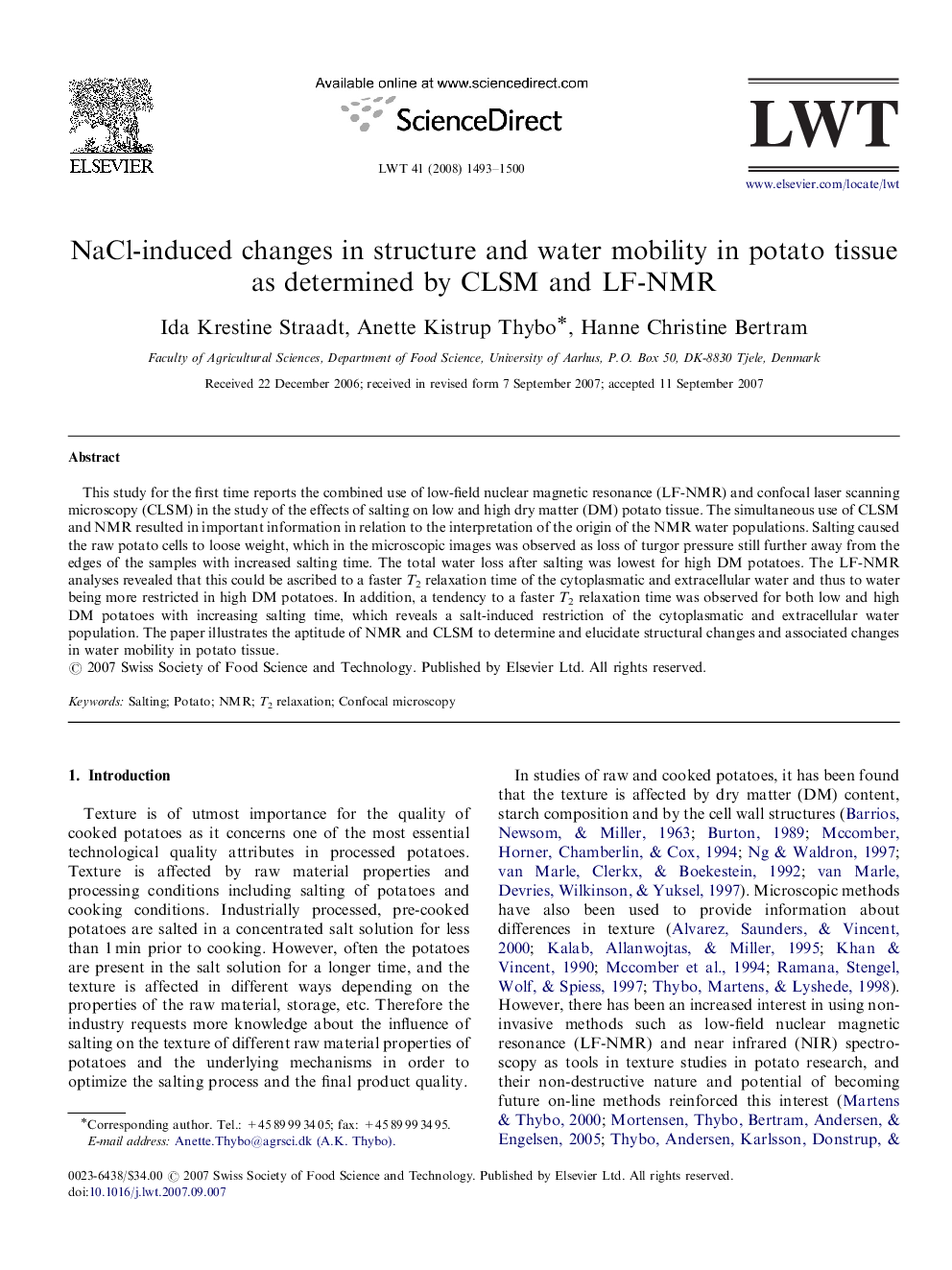| Article ID | Journal | Published Year | Pages | File Type |
|---|---|---|---|---|
| 4564869 | LWT - Food Science and Technology | 2008 | 8 Pages |
This study for the first time reports the combined use of low-field nuclear magnetic resonance (LF-NMR) and confocal laser scanning microscopy (CLSM) in the study of the effects of salting on low and high dry matter (DM) potato tissue. The simultaneous use of CLSM and NMR resulted in important information in relation to the interpretation of the origin of the NMR water populations. Salting caused the raw potato cells to loose weight, which in the microscopic images was observed as loss of turgor pressure still further away from the edges of the samples with increased salting time. The total water loss after salting was lowest for high DM potatoes. The LF-NMR analyses revealed that this could be ascribed to a faster T2 relaxation time of the cytoplasmatic and extracellular water and thus to water being more restricted in high DM potatoes. In addition, a tendency to a faster T2 relaxation time was observed for both low and high DM potatoes with increasing salting time, which reveals a salt-induced restriction of the cytoplasmatic and extracellular water population. The paper illustrates the aptitude of NMR and CLSM to determine and elucidate structural changes and associated changes in water mobility in potato tissue.
